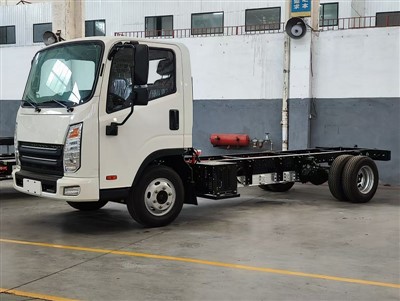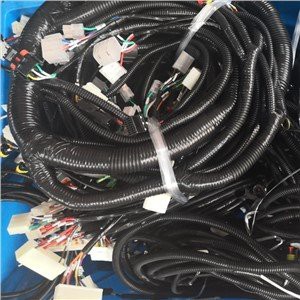Understanding M LPG: A Comprehensive Guide

In recent years, the energy landscape has witnessed a significant shift towards cleaner fuels. One such energy source making waves is M LPG (Modified Liquefied Petroleum Gas). This article explores what M LPG is, its benefits, applications, and how it impacts our daily lives. Readers will find practical examples, tips, and answers to common questions about M LPG.
Table of Contents
- What is M LPG?
- Benefits of M LPG
- Applications of M LPG
- M LPG vs Traditional LPG
- How to Use M LPG Safely
- Environmental Impact of M LPG
- Future of M LPG
- Conclusion
- FAQs
What is M LPG?
Modified Liquefied Petroleum Gas, or M LPG, is a cleaner-burning alternative to traditional LPG. It is a mixture of propane and butane, similar to conventional LPG, but with specific enhancements to improve its efficiency and environmental impact.
Composition of M LPG
M LPG typically consists of:
- Propane – Approximately 60-70%
- Butane – Approximately 30-40%
How is M LPG Produced?
The production of M LPG involves refining processes that enhance its combustibility and lower emissions. By modifying the composition, manufacturers can promote cleaner combustion, resulting in fewer harmful pollutants.
Benefits of M LPG
M LPG comes with numerous advantages that contribute to its growing adoption.
1. Cleaner Burn
One of the most significant benefits of M LPG is its cleaner combustion compared to traditional LPG. This leads to lower emissions of carbon monoxide (CO), carbon dioxide (CO2), and hydrocarbons.
2. Cost-Effectiveness
M LPG typically costs less than traditional fossil fuels, providing households and businesses with significant savings over time.
3. Enhanced Energy Efficiency
This alternative fuel offers improved energy output, meaning that less fuel is required to achieve the same amount of energy output, further minimizing costs.
4. Reduced Residue
Using M LPG results in less soot and residue build-up in appliances, leading to lower maintenance and operational costs.
5. Versatility
M LPG can be used in various applications, from heating and cooking to powering vehicles, showcasing its versatility as an energy source.
Applications of M LPG
The versatility of M LPG opens up numerous applications across different sectors.
1. Residential Use
M LPG is widely used in homes for cooking, heating, and water heating. Many modern gas appliances are designed to run efficiently on M LPG, providing homeowners with convenience and savings.
2. Industrial Use
Industries utilize M LPG for manufacturing processes, heating, and as a power source for forklifts and other machinery. Its high energy efficiency is particularly beneficial in industrial settings.

3. Automotive Fuel
M LPG can also power vehicles, presenting an eco-friendly alternative to gasoline and diesel. Many countries are adopting M LPG-powered vehicles to reduce their carbon footprint.
4. Agriculture
In agriculture, M LPG is used for heating greenhouses, running irrigation systems, and powering machinery, allowing farmers to operate more sustainably.
M LPG vs Traditional LPG
Understanding the differences between M LPG and traditional LPG can help consumers and businesses make informed decisions.
Combustion Quality
| Aspect | M LPG | Traditional LPG |
|---|---|---|
| Carbon Emissions | Lower | Higher |
| Residue Build-up | Minimal | Considerable |
| Fuel Efficiency | Higher | Standard |
How to Use M LPG Safely
Safety is paramount when using M LPG in any application. Here are essential safety tips:
1. Proper Storage
M LPG cylinders should be stored in well-ventilated areas, away from heat sources and direct sunlight.
2. Regular Checks
Inspect your appliances and cylinders regularly for leaks or damage. Use a soapy water solution to check for leaks; bubbles will indicate escaping gas.
3. Use in Well-Ventilated Areas
Always use M LPG appliances in well-ventilated spaces to prevent the accumulation of gas fumes.
4. Emergency Procedures
In case of a leak, turn off the gas supply, evacuate the area, and contact emergency services if necessary.
Environmental Impact of M LPG
The environmental implications of using M LPG are substantial, particularly compared to traditional fossil fuels.
1. Lower Greenhouse Gas Emissions
The use of M LPG significantly reduces greenhouse gas emissions, which is crucial for combating climate change.
2. Air Quality Improvement
By emitting fewer pollutants, M LPG can contribute to improved air quality, benefiting public health and the environment.
3. Contribution to Sustainable Energy Goals
M LPG aligns with global energy transition efforts, providing a step towards adopting sustainable energy sources.
Future of M LPG
The future of M LPG looks promising, with ongoing innovations and shifts towards more sustainable energy practices.
1. Technological Advancements

Research and development in refining processes may lead to even more efficient M LPG production methods, further enhancing its appeal.
2. Policy Support
Governments are increasingly adopting policies to encourage the use of cleaner fuels like M LPG to meet climate targets and support a green economy.
3. Consumer Awareness
As consumers become more aware of environmental issues, the demand for cleaner alternatives like M LPG will likely increase, driving market growth.
FAQs
1. What is the main difference between M LPG and regular LPG?
The main difference is that M LPG is modified to achieve lower emissions and greater efficiency compared to traditional LPG.
2. Can M LPG be used in all gas appliances?
Most modern gas appliances are compatible with M LPG, but it’s advisable to check manufacturer specifications.
3. Is M LPG considered a renewable energy source?
M LPG is not a renewable energy source but is viewed as a cleaner fossil fuel alternative that contributes to reducing environmental impact.
4. How can I ensure the safe use of M LPG at home?

Always store cylinders properly, conduct regular inspections, and ensure proper ventilation when using M LPG appliances.
5. Is M LPG more expensive than traditional LPG?
While pricing can vary by region and market conditions, M LPG is often more cost-effective in the long run due to its higher efficiency and lower fuel consumption.
6. What steps are being taken to promote M LPG usage?
Governments and organizations are creating policies to support cleaner fuels, raising awareness campaigns, and investing in infrastructure to facilitate M LPG adoption.
